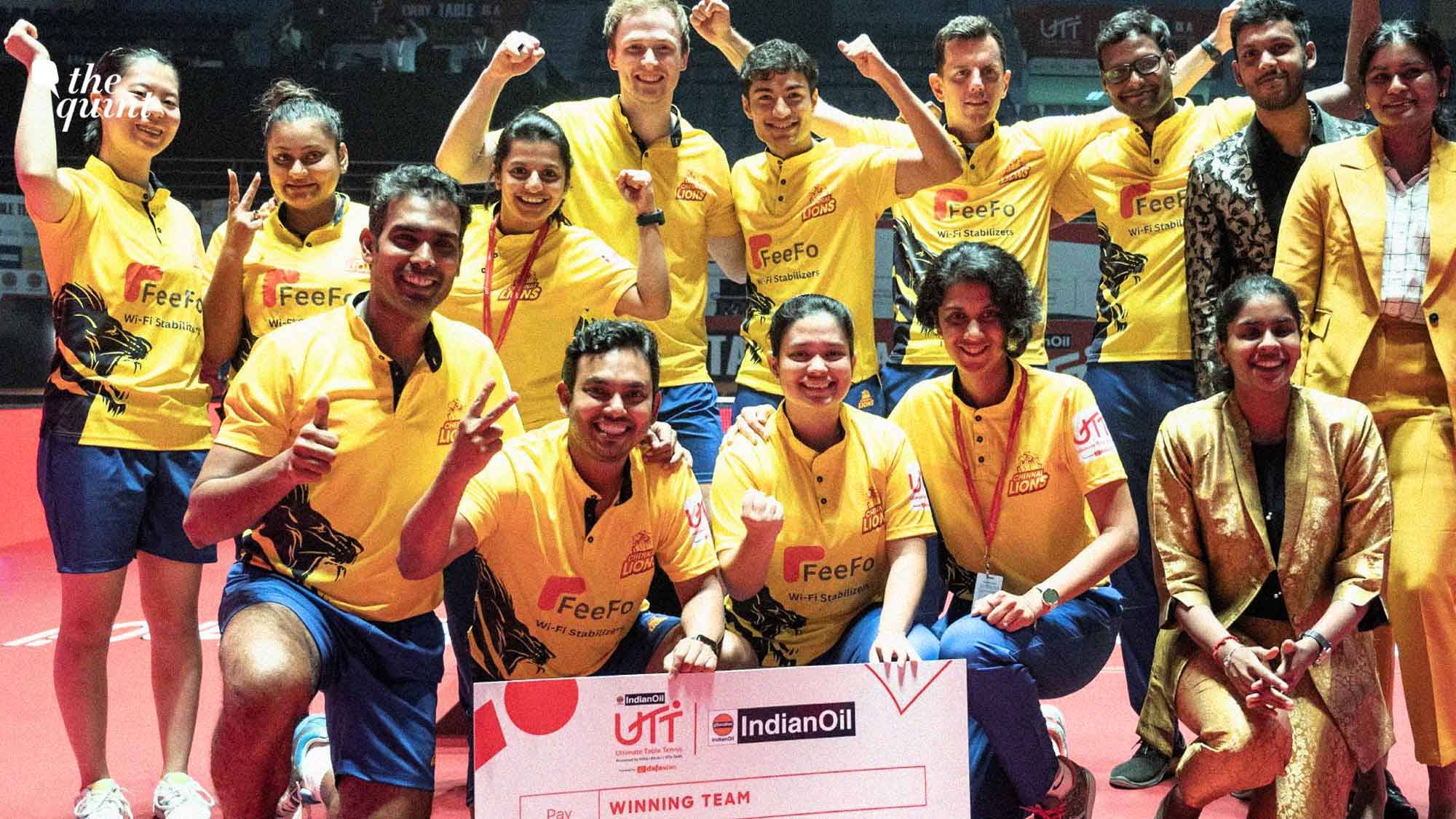Her maturity – both in terms of gameplay and the way she carried out media interactions – made it hard to believe that Diya Chitale, one of India’s prodigious table tennis talents, is all but only nineteen years of age.
In a couple of months, she will feel the weight of the nation’s expectations, and that – she is the youngest member of India’s table tennis contingent for the Asian Games – will be insignificant in the face of challenges.
To prepare for the big stage, she is relying on the exposure that the fourth edition of Ultimate Table Tennis (UTT) – a six-team, franchise-based league involving the desired amalgamation of Indian talents and overseas icons – has to offer.
Ahead of her first match, and from the broader perspective, her debut expedition in the competition, Diya told The Quint “Ever since UTT started, it has been my dream to play in this tournament. I was not involved as a player in the first three seasons, but I was always in the stands. Now that I am playing in it, I am really looking forward to it.”
A day later, she nearly pulled off what would have been a major upset. Up against Manika Batra, the four-time Commonwealth Games medallist and the only female Indian player in ITTF’s top 50 rankings, Diya put up a show of immense resilience – eventually losing out by a 2-1 margin, but not without a fight and a half.
How UTT Helped Ayhika Charter Unexplored Territories
Diya is confident that her experience in UTT will be of immense help, in terms of preparation for the Hangzhou hazards. In Ayhika Mukherjee, she has a ready reckoner – a perfect ‘been-there-done-that’ example.
At 21, Ayhika was selected for her maiden Asian Games campaign, and expectedly, nerves were running overboard.
“I had heard about Asian Games from so many people. Before I went to Indonesia, I was told how many people will be there, how tough the competition is, so I was very nervous initially,” she tells The Quint, during a practice session in Pune’s Shree Shiv Chhatrapati Sports Complex.
Yet, in Jakarta, the hurdles were not high as she expected. The 26-year-old offers an explanation.
I played in the 2018 edition of UTT, where I was involved in many pressure situations and got to compete against some really fantastic players. So, when I reached Jakarta for the Asian Games, the fears I once had were all gone. That’s because UTT got me habituated with every aspect of the big stages – be it pressure, expectations or playing against star players.Ayhika Mukherjee
Ayhika was a part of the women’s team in 2018, where they defeated Qatar and Iran in the preliminary round, before ultimately losing to Hong Kong in the quarter-final.
Yet, India won a couple of medals, with the men’s team and the mixed doubles pairing of Sharath Kamal-Manika Batra roping in bronze medals. It also happened to be India’s first medals at the event, 60 years after the sport was first included in the competition.
Manav, Sathiyan Credit UTT for 2018 Asian Games Triumph
One of those ten players is Manav Thakkar, who was a part of the historic men’s team of 2018. Having seen the highest of highs as an 18-year-old, Manav, who is now 23, explains the importance of the competition from the national perspective.
“The reason why UTT is a fantastic platform is because it erases boundaries. The best players in the world are coming to India and staying with us. We can now see how they train, what their diet routine is, how they prepare for matches and how they recover from losses,” he informs The Quint, before touching upon another crucial aspect.
Another important benefit of UTT is that you are playing against top players in every match – this is not the case in other competitions. Elsewhere, you face the comparatively easier opponents in the initial rounds, and then face the renowned players in only the later rounds. Quite often, we would get only one opportunity to play against a great player, which does not help in improving one’s game. Here at UTT, we get to play against some of the world’s best for all throughout the season. Also, beating these players gives us confidence – that Indians too can compete in table tennis.Manav Thakkar
Sathiyan Gnanasekaran, another member of the 2018 men’s team, who also has won six Commonwealth Games medals, says “It is the pressure and intensity of UTT that you can’t replicate elsewhere. I believe the 2018 Asian Games triumph wouldn’t have happened without this competition.”
Echoing similar sentiments, the chairperson of the league, Vita Dani says “At the end of the day, our aim is that India will win, not Ultimate Table Tennis.”
Since the league’s inception in 2017, India did win, on multiple occasions. Now, with the fourth season up and running, expectations are high for the Indian paddlers to win more medals and accolades, with the Asian Games, and then, the Paris Olympics being right at the corner.
